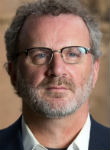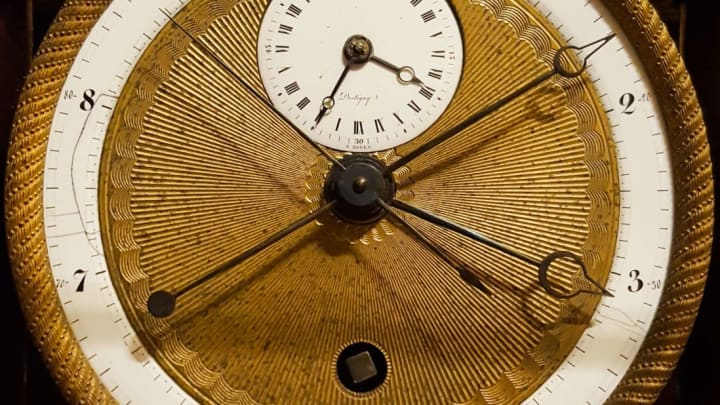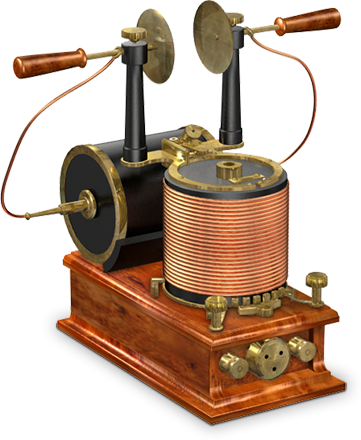|
Reply |
Message 1 of 47 on the subject |
|

Mark O’Connell – UFOs and Astronomer Dr. J Allen Hynek – June 26, 2017
Posted by: Alejandro Rojas June 26, 2017
 Open Minds UFO Radio: Mark O’Connell has written several episodes of “Star Trek: The Next Generation” and “Star Trek: Deep Space Nine” — one of which, the DS9 episode “Who Mourns For Morn?”, was named by Hugo-winning science fiction writer Charlie Jane Anders as #72 on the io9.com list of the Top 100 Star Trek episodes of all time. Mark has had feature film projects in development with Disney, DreamWorks Animation, Launchpad Productions, Barcelona Films and Al Ruddy Productions. He currently writes the UFO blog “High Strangeness” and made his reality show debut in 2015 on “Mysteries at the Monument” on The Travel Channel. Mark has written “The Close Encounters Man,” the authorized biography of UFO scholar Dr. J. Allen Hynek. – Bio from Coast to Coast AM. Open Minds UFO Radio: Mark O’Connell has written several episodes of “Star Trek: The Next Generation” and “Star Trek: Deep Space Nine” — one of which, the DS9 episode “Who Mourns For Morn?”, was named by Hugo-winning science fiction writer Charlie Jane Anders as #72 on the io9.com list of the Top 100 Star Trek episodes of all time. Mark has had feature film projects in development with Disney, DreamWorks Animation, Launchpad Productions, Barcelona Films and Al Ruddy Productions. He currently writes the UFO blog “High Strangeness” and made his reality show debut in 2015 on “Mysteries at the Monument” on The Travel Channel. Mark has written “The Close Encounters Man,” the authorized biography of UFO scholar Dr. J. Allen Hynek. – Bio from Coast to Coast AM.
In this episode of Open Minds UFO Radio, we talk to Mark about his UFO interest, his book on Dr. J. Allen Hynek and his work as a UFO field investigator for the Mutual UFO Network (MUFON). We also delve into a couple topics suggested by listeners, including the rumors that Hynek was a double agent and was working for the CIA or FBI to derail UFO studies, and Hynek’s interest in comics that made fun of him. Don’t miss this interview about one of my favorite researchers in the UFO field.
http://www.openminds.tv/mark-oconnell-ufos-and-astronomer-dr-j-allen-hynek-june-26-2017/40427 |
|
|
|
Reply |
Message 33 of 47 on the subject |
|
|
|
|
Reply |
Message 34 of 47 on the subject |
|
|
|
|
Reply |
Message 35 of 47 on the subject |
|
|
|
|
Reply |
Message 36 of 47 on the subject |
|
|
|
|
Reply |
Message 37 of 47 on the subject |
|
|
|
|
Reply |
Message 38 of 47 on the subject |
|
|
|
|
Reply |
Message 39 of 47 on the subject |
|
|
|
|
Reply |
Message 40 of 47 on the subject |
|
|
|
|
Reply |
Message 41 of 47 on the subject |
|
Many people take medication on a daily basis, and these medications are used to treat diseases and promote health. Although drugs might help you feel better and get well, it's vital to realise that all medicines, both prescription and over-the-counter, have dangers and benefits.
Medicines' advantages are the positive effects they have on your body, such as decreasing blood pressure, treating infections, or relieving pain. The dangers of medications are the odds that something undesirable or unexpected will happen to you when you use them. Risks might range from minor, such as an upset stomach, to serious, such as liver damage.
https://mmairaprokar616a0795ea.wordpress.com/
https://pharmaceuticalusatoday.blogspot.com/
https://cannabisnewsusa.blogspot.com/
https://distilateblog.blogspot.com/
https://marijuananewsus.blogspot.com/
https://pillersapotek.blogspot.com/
https://didiupdates.blogspot.com/
https://cannabisworld12.blogspot.com/
https://chemicalus404.blogspot.com/
https://psychedelicnewsus.blogspot.com/
https://pharmablog12.blogspot.com/
https://businessfeel1.blogspot.com/
https://nembutal44.blogspot.com/
https://swedentoday1.blogspot.com/
https://solidcrystalblog.blogspot.com/
https://chemicalfortress.blogspot.com/
Köp mimosa hostilis online
Köp mescaline pulver online
Köp mdma-piller online
Köp mdma-piller online
Köp Demerol Injektion online
Köp Cialis tadalafil online
Compre pó PCP online
Compre 4-AcO DMT online
Compre Ayahuasca online
Køb efedrinpulver online
Køb Xanax Alprazolam online
Køb Rohypnol online
Comprar mefedrona (4MMC)
Comprar heroína blanca
Comprar Vyvanse (Lisdexanfetamina)
Kaufen-Sie Provigil (Modafinil) online
Kaufen-Sie Arimidex (Anastrozol) online
Kaufen-Sie Desoxyn (Methamphetamin) online
Buy Belviq online
Buy Contrave 8mg/90mg online
Buy orlistat online
https://versteapotek.com/product/kop-efedrin-tabletter-online/
https://versteapotek.com/product/kop-u-47700-online/
https://versteapotek.com/product/kop-oxykodon-pulver-online/
https://versteapotek.com/product/kop-flualprazolam-pulver-online/
https://www.frstaapoteket.com/product/kjop-citodon-500mg-online-i-norge/
https://www.frstaapoteket.com/product/kjop-concerta-online-i-norge/
https://www.frstaapoteket.com/product/kjop-ritalin-online/
|
|
|
|
Reply |
Message 42 of 47 on the subject |
|
|
|
|
Reply |
Message 43 of 47 on the subject |
|
|
|
|
Reply |
Message 44 of 47 on the subject |
|
|
|
|
Reply |
Message 45 of 47 on the subject |
|
Decimal Time: How the French Made a 10-Hour Day
Everybody knows that there are 24 hours in a day, 60 minutes in an hour, and 60 seconds in minute.* But in 1793, the French smashed the old clock in favor of French Revolutionary Time: a 10-hour day, with 100 minutes per hour, and 100 seconds per minute. This thoroughly modern system had a few practical benefits, chief among them being a simplified way to do time-related math: if we want to know when a day is 70 percent complete, decimal time simply says "at the end of the seventh hour," whereas standard time requires us to say "at 16 hours, 48 minutes." French Revolutionary Time was a more elegant solution to that math problem. The trick was that every living person already had a well-established way to tell time, and old habits die hard.
Noon is at Five in Decimal Time
French Revolutionary Time officially began on November 24, 1793, although conceptual work around the system had been going on since the 1750s. The French manufactured clocks and watches showing both decimal time and standard time on their faces (allowing for conversion and confusion).
The system proved unpopular. People were unfamiliar with switching systems of time, and there were few practical reasons for non-mathematicians to change how they told time. (The same could not be said of the metric system of weights and measurements, which helped to standardize commerce; weights and measurements often differed in neighboring countries, but clocks generally did not.) Furthermore, replacing every clock and watch in the country was a spendy proposition. The French officially stopped using decimal time after just 17 months: French Revolutionary Time became non-mandatory starting on April 7, 1795. This didn't stop some areas of the country from continuing to observe decimal time, and a few decimal clocks remained in use for years afterwards, presumably leading to many missed appointments.
Other Attempts at Decimal Time
The French Republican Calendar was another attempt by revolutionary France to decimalize everything. It wasn't particularly successful.
The French tried again in 1897, when the Commission de Décimalisation du Temps proposed a 24-hour day with 100-minute hours, again with 100 seconds per minute. This proposal was scrapped in 1900.
And then, of course, there's the Stardate, a pseudo-decimal system of date measurement used in Star Trek. Unsurprisingly, the Stardate started out being supremely imprecise and was just supposed to sound futuristic; here's a snippet from the Star Trek Guide for teleplay writers on the original series:
"Pick any combination of four numbers plus a percentage point, use it as your story's stardate. For example, 1313.5 is twelve o'clock noon of one day and 1314.5 would be noon of the next day. Each percentage point is roughly equivalent to one-tenth of one day."
And lest we forget Swiss watchmakers in all of this, Swatch introduced their own bizarre decimal time system in 1998. Called Swatch Internet Time, it divided the day into ".beats" (yes, with a dot) and referred to a particular .beat using the @ symbol (so you might say, "ICQ me at @484 so we can swap some beenz, LOL!"). Each .beat lasted 1 minute and 26.4 seconds and represented 1/1000 of a day. Nope, not confusing @all.
* = There are actually several exceptions to the 24/60/60 rule, most notably leap seconds, but let's keep it simple.
A version of this story ran in 2013; it has been updated for 2021.
https://www.mentalfloss.com/article/32127/decimal-time-how-french-made-10-hour-day |
|
|
|
Reply |
Message 46 of 47 on the subject |
|
Tesla Coil – 1891
By the late 1800s, electricity had long been discovered and was no longer considered a novelty. The science of how to store, enhance, or transmit electrical current was just beginning to evolve, and eccentric scientist Nikola Tesla (1856-1943) was on the cutting edge of that research.
In 1891, Tesla unveiled one of his most important inventions, the "Tesla coil," a high-frequency transformer capable of creating very high voltage at low current. He built several variations of his invention.
The most popular of his designs is made up of a transformer, capacitor, spark gap, main coil, minor coil and discharge sphere. Here is how it works: The transformer receives a charge of about 100 volts from an outside source and increases it to as many as 50,000 volts or more. The capacitor stores the voltage until it reaches its limit, at which point the spark gap emits all of the pent-up energy in one massive outburst, surging to the main coil, which is often built out of wide copper wire, generating a powerful magnetic field. The current continues to the minor coil that serves as a transformer, utilizing the effects of the magnetic field to build enormous quantities of voltage. At this point, the electricity flows to a discharge sphere that emits the current as a stream or arc of sparks.
Circuitry using the Tesla coil was part of the first generation of transmitters to carry wireless telegraphy. Tesla used his brainchild to research such diverse areas as lighting, X-rays and electric power transmission. Customized Tesla coils are now frequently used to ignite powerful mercury and sodium streetlamps.
Although they have now been largely replaced by more modern circuitry, Tesla coils frequently show up in popular media, most commonly in the form of high-tech guns in video games, blasting bolts of lightning at adversaries. On the big screen, a Tesla coil was used to produce lighting effects for the 1979 film "Star Trek: The Motion Picture."
https://nationalmaglab.org/magnet-academy/history-of-electricity-magnetism/museum/tesla-coil-1891/ |
|
|
|
Reply |
Message 47 of 47 on the subject |
|
Visual y simbólicamente impactante, no tuve problemas para discernir una alusión codificada a los viajes en el tiempo , sobre la cual pueden leer todo en mi artículo " Relatividad en el Hudson ". La principal pista inicial que me dio pie fueron las asombrosas imágenes del choque acuático y el escape, que eran casi idénticas a la escena del impacto de la nave espacial en la secuencia inicial de El Planeta de los Simios .
 
Eso me llevó a pensar en el efecto de "dilatación temporal" de la Teoría de la Relatividad Especial de Einstein (cuanto más rápido se viaja, más lento fluye el tiempo en relación con los observadores más lentos), que es literalmente "viaje en el tiempo" y el medio por el cual los astronautas de El Planeta de los Simios viajan al futuro. Lo que descubrí mediante un cálculo simple fue que el problemático viaje final del Vuelo 1549 se originó en "octubre de 1307", precisamente cuando los Caballeros Templarios, como organización pública y legal, llegaron a un abrupto final cuando el rey Felipe IV de Francia y el papa Clemente V atacaron duramente a la Orden, desmantelando rápidamente a los banqueros-guerreros a quienes el rey debía una fortuna.

Los Templarios eran marineros altamente hábiles que contaban con su propia flota de barcos (que algunos miembros probablemente utilizaban para evadir las fuerzas del rey). Por ello, se ha especulado ampliamente que los Caballeros Templarios ya habían visitado y explorado América mucho antes de Colón (quien tenía vínculos familiares con la Orden). Estados Unidos, como algunos han argumentado, podría incluso considerarse una nación templaria construida sobre, y aún impulsada por, principios templarios —incluyendo ideas gnósticas y el culto a la diosa/Isis /Sofía (=> Estatua de la Libertad)—, que son en gran medida intercambiables con los principios masónicos (ya que la Orden probablemente se fusionó con una rama de la masonería en Escocia a través de la familia Sinclair tras el arresto masivo). Es bien sabido, por ejemplo, que muchos de los miembros fundadores y presidentes de Estados Unidos eran masones, incluyendo a Harry Truman, masón de grado 33, quien ordenó el lanzamiento de dos bombas atómicas sobre Japón durante la Segunda Guerra Mundial. Fue la aterradora culminación del Proyecto Manhattan , iniciado después de que físicos prominentes, entre ellos Albert Einstein, advirtieran al presidente Roosevelt sobre el advenimiento de armas basadas en fisión nuclear.
La reacción nuclear es una manifestación dramática de la famosa ecuación de "equivalencia masa-energía" de Einstein, E = mc₂ , derivada de la Relatividad Especial . (La "c" en la ecuación representa la velocidad de la luz en el vacío). La materia se convierte en energía. Es precisamente por esta razón que el primer portaaviones de propulsión nuclear del mundo, en ocasiones especiales, luce con orgullo la ecuación en su cubierta, como este año, celebrando su 50.º aniversario (véase la imagen inferior) . El barco se llama... USS Enterprise .
 [ Enterprise se encuentra actualmente en su fase final de implementación y [ Enterprise se encuentra actualmente en su fase final de implementación y
será dado de baja en marzo de 2013]
Hay otra "USS Enterprise"... una nave espacial muy querida en Star Trek , de la cual se bautizó el transbordador espacial Enterprise (originalmente se llamaría "Constitution"). Justo a tiempo, y en perfecta sintonía con el patrón subyacente, Star Trek y la nave espacial Enterprise se convirtieron en un tema candente en mayo de 2012...

11 de mayo Un ingeniero cree que una verdadera nave espacial Enterprise
es posible en 20 años
18 de mayo ¿Podría realmente volar una USS Enterprise del siglo XXI?
...incluida una historia que involucra directamente a SpaceX Dragon , que transportaba a bordo las cenizas de "Scotty" (el actor), quien fue ingeniero jefe del Enterprise en la serie original de Star Trek.

El 22 de mayo, "Scotty" de Star Trek finalmente fue lanzado al espacio.
" Enterprise " fue también el título de la última serie de televisión de Star Trek, que se emitió entre septiembre de 2001 y mayo de 2005...

...protagonizada por Scott Bakula como el capitán "Johathan Archer" de la nave espacial Enterprise NX-01.
 
[Capitán del Enterprise "Jonathan Archer"/Scott Bakula]
- El actor Bakula es mejor conocido por su papel de Sam Beckett (personaje principal) en Quantum Leap (1989-1993), una serie de televisión sobre viajes en el tiempo .
- Star Trek: Enterprise tuvo como recurso argumental recurrente la " Guerra Fría Temporal " que involucra fuertemente viajes en el tiempo .
La Guerra Fría Temporal es un conflicto ficticio que se libra a lo largo de la historia en el universo de Star Trek , principalmente durante el siglo XXII d. C. Establecida por primera vez en el episodio piloto de Star Trek: Enterprise y recurrente hasta el estreno de la cuarta temporada de la serie, es una lucha entre quienes alteran la historia para sus propios fines y quienes preservan la integridad de la línea temporal original.
Incluso la película más reciente de Star Trek, Star Trek (2009), incorporó el viaje en el tiempo a su trama...

Además, la película fue dirigida y producida por JJ Abrams, quien también produjo Cloverfield . (La aparente obsesión de Abrams con los viajes en el tiempo y las realidades alternativas se refleja en muchas de sus obras, como Fringe , Lost , Alcatraz , etc.). Actualmente está trabajando en una secuela de Star Trek, que se estrenará en 2013.
 
Y finalmente, está " La Misión Enterprise " del investigador de anomalías espaciales y de Marte , Richard C. Hoagland ... quien actualmente se centra, naturalmente, en el próximo tránsito de Venus (y en el reciente eclipse solar anular).

Como se detalla en su último artículo publicado en mayo de 2012 titulado " Un eclipse más hiperdimensional... y el tránsito final de Venus ", el interés de Hoagland en esto tiene que ver específicamente con cómo estas alineaciones celestiales parecen producir efectos tangibles de torsión o física hiperdimensional o, en otras palabras, la deformación del espacio-tiempo en sí (a través de la masa giratoria), que es un concepto inseparable del viaje en el tiempo .
* * *
MENSAJE UNIFICADO
En este artículo, solo hemos arañado la superficie de todo esto. Venus, eclipses, pentagramas, la familia real británica y los Juegos Olímpicos, viajes espaciales comerciales, viajes en el tiempo, física de torsión, Prometeo, el fuego, el Grial y los Templarios, Marte/Cydonia/Face... todo está estrechamente conectado de muchas maneras y a varios niveles. Pero ¿dónde está el "epicentro" de todas estas señales? ¿Cuál es el mensaje final y unificado? Aún es difícil decirlo, y no hay necesidad de sacar conclusiones precipitadas, pero...
Diría que, en última instancia, se trata de quiénes somos: de dónde venimos y adónde vamos. Se trata del tiempo: nuestro Génesis y nuestro Destino. Está en el fuego de Prometeo, la manzana de Eva, el Santo Grial, la semilla celestial de los Anunnaki... y Marte.

A lo largo de la vida y la historia, hemos navegado sin rumbo por el río del tiempo, y el tiempo es una condición que separa el presente del pasado y el futuro. Conciencia limitada . Estamos aquí y no sabemos por qué. A veces creemos casi sentir los secretos, la verdad, oculta en el "Salón de los Registros", ya sea en nuestro ADN, Egipto, Marte... pero siempre fuera de nuestro alcance. "Viajar en el tiempo" es acceder al lado oculto de la realidad, la historia o el destino para descubrir quiénes somos realmente. Aún no hemos llegado allí, pero desde una perspectiva multicontextual de "panorama general", escapar de la gravedad terrestre representa o refleja un primer paso importante. Hablando multicontextualmente, cuanto más nos acercamos a Marte y más aprendemos sobre su historia (incluida la vida), más nos acercamos al límite del tiempo, al hiperespacio.
La paranoia y las discusiones sobre el calendario maya hacen del año 2012 un marco temporal ideal para simular o presagiar microcósmicamente el proceso del Apocalipsis, el descorrimiento del velo... el proverbial momento "¡Ajá!"... que está a la vuelta de la esquina. El siglo XXI es el final del camino donde debemos "saltar" fuera del tiempo y convertirnos en Prometeo.

Todos estamos preñados... de verdad. El destino nos llama. El bebé está a punto de nacer. Es probable que todo esto sea una simulación en 2012. Parte del proceso de "despertar".

ACTUALIZACIONES
|
|
|
 First First
 Previous
33 a 47 de 47
Next Previous
33 a 47 de 47
Next
 Last
Last

|
 Open Minds UFO Radio: Mark O’Connell has written several episodes of “Star Trek: The Next Generation” and “Star Trek: Deep Space Nine” — one of which, the DS9 episode “Who Mourns For Morn?”, was named by Hugo-winning science fiction writer Charlie Jane Anders as #72 on the io9.com list of the Top 100 Star Trek episodes of all time. Mark has had feature film projects in development with Disney, DreamWorks Animation, Launchpad Productions, Barcelona Films and Al Ruddy Productions. He currently writes the UFO blog “High Strangeness” and made his reality show debut in 2015 on “Mysteries at the Monument” on The Travel Channel. Mark has written “The Close Encounters Man,” the authorized biography of UFO scholar Dr. J. Allen Hynek. – Bio from Coast to Coast AM.
Open Minds UFO Radio: Mark O’Connell has written several episodes of “Star Trek: The Next Generation” and “Star Trek: Deep Space Nine” — one of which, the DS9 episode “Who Mourns For Morn?”, was named by Hugo-winning science fiction writer Charlie Jane Anders as #72 on the io9.com list of the Top 100 Star Trek episodes of all time. Mark has had feature film projects in development with Disney, DreamWorks Animation, Launchpad Productions, Barcelona Films and Al Ruddy Productions. He currently writes the UFO blog “High Strangeness” and made his reality show debut in 2015 on “Mysteries at the Monument” on The Travel Channel. Mark has written “The Close Encounters Man,” the authorized biography of UFO scholar Dr. J. Allen Hynek. – Bio from Coast to Coast AM.






















